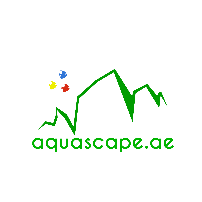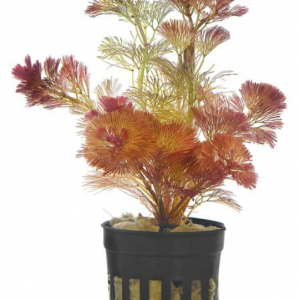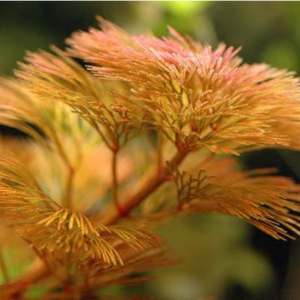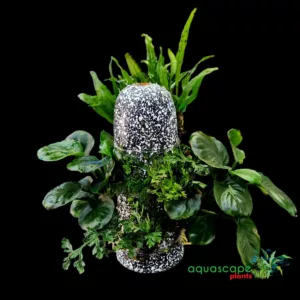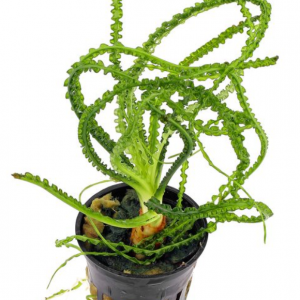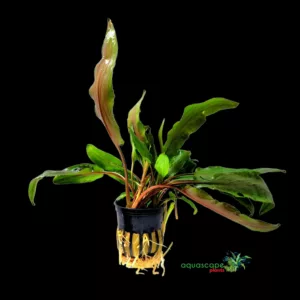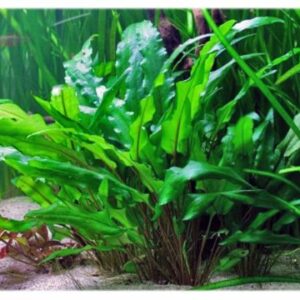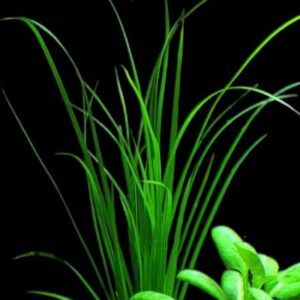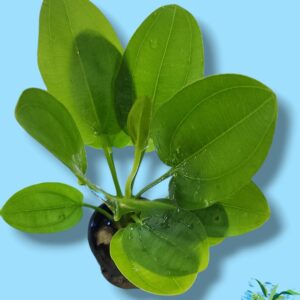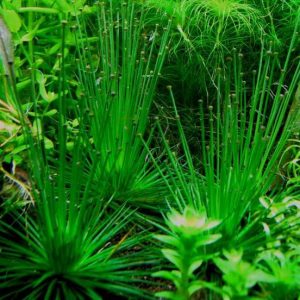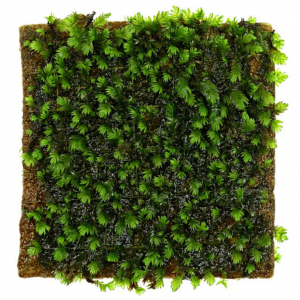Subtotal: د.إ640.50
Potted
Showing 49–72 of 128 results
-
Sold out!Live Plants & Neutrients, Plants, Potted
Bucephalandra kedakang on lava rock
Bucephalandra Kedagang on lava rock is an easy plant that is good for beginners. It can be submerged or immersed in water. The plant is very slow growing, with new leaves sprouting from long, thin rhizomes. It can be propagated by cutting the rhizome and attached to driftwood and rocks.Common Name: BucephalandraFamily Name: AraceaeNative To: AsiaLighting: Low – MediumpH: 5.0-8.0Growth Demands: (options – medium)Growth Form: rhizomesGrowth Rate: SlowTrue Aquatic: YesPlacement in Tank: foreground, mid-groundSKU: n/a -
Live Plants & Neutrients, Plants, Potted
Cabomba aquatica
Cabomba aquatica
- Gorgeous stem plant from South America
- Light green, filigree leaves
- Especially suited to larger aquariums
The Cabomba aquatica is a gorgeous fine-leafed stem plant from tropical South America. This aquatic plant comes from sunny, fast flowing to calm, acid, very soft waters. There are different forms of this species, e.g. the reddish “Cabomba schwartzii”, however the customary form has light green leaves. The stems of Cabomba aquatica may get more than one meter long and have pairs of up to 9 cm wide, fan-shaped submerged leaves with fine segments. When the shoots reach the water surface, shield-shaped floating leaves and yellow flowers may appear.
In contrast to the winter-hardy Carolina fanwort Cabomba caroliniana, an invasive species in Europe, the tropical Cabomba aquatica is still allowed to be traded in the European Union. For all kinds of aquarium plants, it must be ensured that they do not enter waters and sewage systems. Dispose aquarium plants via the household waste only.Cabomba aquatica is a demanding aquarium plant. Strong lighting, soft, flowing water and CO2 addition are important, as well as macro and micronutrient supply on a regular basis. The optimum temperature range lies between 23 and 27 °C. As well as other stem plants, The Giant Cabomba can be propagated by cuttings, it also develops new shoots at the basis of older stems.
This Cabomba looks best in larger, at least 50 cm high tanks, as a group or larger stand in the background to midground. Its light green, filigree foliage contrasts with darker or red, more coarsely textured plants. In open tanks, also its floating leaves and small yellow flowers offer an interesting sight; they may develop when the stems are allowed to grow along the surface.
Cabomba aquatica is a highly variable fanwort originating from the northern and central parts of South America. There are various colour varieties, the most frequently found in trade form of which is a green plant named giant Cambomba.
C. aquatica has up to 8.5 cm long and 9.5 cm wide submersed leaves parted into a great many fine tips. When the sprouts reach the water surface, on its tip widely oval to roundish, shield-shaped floating leaves may form, as well as yellow, mostly two-fold flowersSKU: n/a -
Sold out!
-
Live Plants & Neutrients, Plants for terrarium, Potted
Creeping Jenny or Lysimachia nummularia
Lysimachia nummularia, commonly known as Creeping Jenny or Moneywort, is a versatile and attractive plant that can be grown both in aquariums and in terrestrial environments (e.g., ponds, gardens, or terrariums). It is known for its bright green or golden-yellow leaves and its creeping growth habit. Here’s a detailed care guide to help you grow and maintain this plant:
1. Overview
- Scientific Name: Lysimachia nummularia
- Common Name: Creeping Jenny, Moneywort
- Origin: Europe and North America
- Difficulty Level: Easy
- Growth Rate: Fast
- Light Requirement: Medium to High
- CO2 Requirement: Not required (but beneficial for submerged growth)
2. Tank or Pond Requirements
- Tank Size: Suitable for small to large aquariums (10+ gallons) or outdoor ponds.
- Water Temperature: 60–75°F (15–24°C). It can tolerate slightly cooler or warmer temperatures.
- pH Level: 6.0–7.5 (slightly acidic to neutral).
- Water Hardness: Soft to moderately hard (2–15 dGH).
SKU: n/a -
Plants, Potted
Crinum Calamistratum
- Undemanding plant
- Curvy narrow leaves
- Dark green color
Complete botanical name Crínum calamistrátum Bogner & Heine Family Amaryllidaceae Genus Crinum Difficulty easy Usage Background, Midground, Specimen plant Growth slow pH value 5 – 8 Temperature tolerance 12 – 30°C Carbonate hardness 2 – 12°dKH  SKU: n/a
SKU: n/a -
Plants, Potted
Cryptocoryne undulatus red
Cryptocoryne undulatus red is a type of aquarium plant commonly known as the “red wendtii” or “red crypt.” It belongs to the genus Cryptocoryne, which consists of various species known for their stunning appearance and ability to thrive in aquatic environments
SKU: n/a -
Live Plants & Neutrients, Plants, Plants for terrarium, Potted
Cryptocoryne wendtii Green Pot
- Robust time-tested Crypt
- Forms dense groups
- Green to slightly brown hues
Cryptocoryne Wendtii Green – A Hardy Aquatic Plant for Stunning Aquascapes
Cryptocoryne Wendtii Green is a popular freshwater aquarium plant, prized for its lush green leaves and low-maintenance care. Native to Sri Lanka, this versatile plant thrives in various water conditions, making it ideal for beginners and experienced aquarists alike.
With its compact growth habit and tolerance for low light, Cryptocoryne Wendtii Green is perfect for foreground to midground placement in aquascapes. It adapts well to CO2-enriched and non-CO2 setups, providing a natural and serene aesthetic to any tank.
Enhance your aquarium’s ecosystem with this hardy, slow-growing plant that offers shelter and grazing spots for fish and invertebrates. Choose Cryptocoryne Wendtii Green for a vibrant and long-lasting underwater display.
SKU: n/a -
Live Plants & Neutrients, Plants, Potted
Cyperus Helferi
Cyperus helferi is a popular aquatic plant species that is native to Thailand in Southeast Asia. It is a relatively new plant in the aquarium hobbyist community and is known for its unique appearance and growth characteristics. This plant is typically found in ponds and slow-flowing water and is one of the few plants from the Cyperaceae family that can grow fully submersed
SKU: n/a -
Live Plants & Neutrients, Plants, Potted
Echinodorus ‘Aquartica’
This compact, green, low-growing Echinodorus cultivar was developed by the plant breeder Christian Iversen from Aquartica company in Denmark. Under aquarium conditions, it forms a spreading rosette of broadly elliptic, medium green leaves with wavy margin. In stark contrast to the many vigorously growing, large swordplants, it is even suited for the foreground and for nano aquariums as it gets only 10-20 cm. Furthermore it grows quite slowly and contents with only moderate light intensity.
This plant is mostly delivered in its emersed (terrestrial) stage, with more roundish, longer stalked leaves. Planted into the aquarium, it will develop its typical submerged growth habit.
Recommendable low-growing Echinodorus cultivar
10-20 cm tall
Medium-green leaves with wavy edge
Also suited for the foreground and nano aquariumsSKU: n/a -
Sold out!Live Plants & Neutrients, Plants, Potted
Echinodorus Rose
Echinodorus ‘Red Diamond’ was bred in the Ukraine and is probably a cross between Echinodorus horemanni ‘Red’ and Echinodorus x barthii. The resultant hybrid is an attractive, relatively small plant with ruby-red sword-shaped leaves, 15-25 cm long.
Unlike many other sword plants, Echinodorus ‘Red Diamond’ remains moderate in size (20-30 cm wide rosette), so it is extremely well suited as a solitary plant, even in small aquariums. Increasing the nutrients in the substrate results in more abundant growth, while favourable light conditions promote the formation of the ruby-red leaves.
- Red leaves, dark red nerves
- Narrowly egg-shaped leaves
- Relatively low
- Also suitable for small tanks
Genus Echinodorus Difficulty medium Usage Background, Midground Growth medium pH value 5 – 7 Temperature tolerance 15 – 30°C Carbonate hardness 0 – 21°dKH General hardness 0 – 30°dGH Propagation Proliferating inflorescences, Rhizomteilung Can grow emersed? yes SKU: n/a -
Live Plants & Neutrients, Plants, Plants for terrarium, Potted
Echinodorus vesuvius
Echinodorus vesuvius, also known as the Vesuvius Sword Plant, is a unique and eye-catching aquatic plant. Here’s a detailed description:
Overview
Common Name: Vesuvius Sword Plant Scientific Name: Echinodorus vesuvius (also known as Helanthium bolivianum ‘Vesuvius’) Family: Alismataceae Origin: Hybrid, likely from Singapore
Appearance
Leaves: Narrow, twisted, and spiral-shaped, resembling corkscrew vallisneria Height: Typically grows between 10 to 30 cm (4 to 12 inches) Growth Rate: Fast, especially in nutrient-rich environments
Care Requirements
Lighting: Medium to high intensity CO2: Beneficial but not essential Water Parameters:
- pH: 5.5 to 7.5
- Hardness: Soft to moderately hard water
- Temperature: 21 to 25 °C (70 to 77 °F)
SKU: n/a -
Sold out!Plants, Potted
Eleocharis vivipara Tall hairgrass
The Tall Hairgrass forms hair-thin long leaves. On the leaf tips, adventitious plants are formed. Eleocharis vivipara is ideal for planting higher “meadows” in the back of the aquascape.
Difficulty easy Usage Background, Midground Growth medium pH value 4 – 7 Temperature tolerance 5 – 29°C Carbonate hardness 2 – 5°dKH General hardness 0 – 30°dGH Propagation Proliferating inflorescences, Splitting, cutting off daughter plants SKU: n/a -
Live Plants & Neutrients, Plants, Potted
Fissidens fontanus “Phoenix Moss” on pad
- Also labeled “Fissidens geppii”
- Highly decorative aquatic moss
- Feathery appearance
- Dark green coloration
- Also suitable for cold water tanks
Fissidens fontanus is a delicate feathery dark green aquatic moss clinging to driftwood or rocks with its rhizoids, forming roundish cushions or lawn-like populations. It is also known under the synonym Octodiceras fontanum and in the trade as “Fissidens geppii”. We cultivate two variants of this species, which differ in size when growing in the same environment. The smaller variant is what we call “Phoenix moss”. It develops around 3 to 5 mm long leaflets, is of a somewhat darker green and has an overall more delicate growth habit and looks more compact as it branches more readily than the larger variant.
Difficulty easy Usage Epiphyte (growing on hardscape), Midground, Nano tanks, Foreground, group Aquascaping fine-leaved Growth medium pH value 5 – 7 Temperature tolerance 4 – 26°C Carbonate hardness 0 – 14°dKH SKU: n/a -
Sold out!Plants, Potted
Fissidens sp. “Mini Nobilis”
This small Fissidens moss entered the trade as Fissidens nobilis or F. nobilis “Mini” but belongs with certainty not to the much larger, stronger species Fissidens nobilis from Asia. belongs to a different species. It develops about 2 mm broad shoots that are densely set with tiny leaves. With time, it forms thick, fluffy cushions of many shoots.
- Small, filigree Fissidens
- Fine, feather-like structure
- Forms thick, fluffy cushions
- Very rare in trade
SKU: n/a -
Live Plants & Neutrients, Plants, Potted
Hornwort ‘Foxtail’ aquarium plant
Description
- Very fast grower.
- Undemanding.
- Recommended for initial planting and breeding tanks.
- Rootless, also growing as free-floating plant.
- Competes with algae.
- Good for breeding guppies
Genus Ceratophyllum Difficulty very easy Usage Background, Plant for spawning, Midground, Water surface Aquascaping fine-leaved Growth very fast pH value 6 – 9 Temperature tolerance 4 – 30°C Carbonate hardness 5 – 24°dKH General hardness 0 – 30°dGH Propagation Fragmentation, Cuttings Can grow emersed? no BUY MORE SAVE MORE!
Buy 5 or more for additional discount!
Buy 10 or more to get super discount!
SKU: n/a

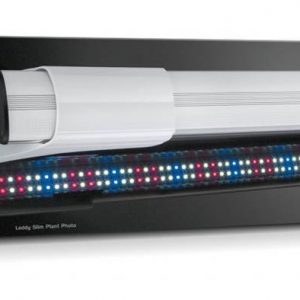 Leddy Slim 32W Plant Spec 80-100cm
Leddy Slim 32W Plant Spec 80-100cm 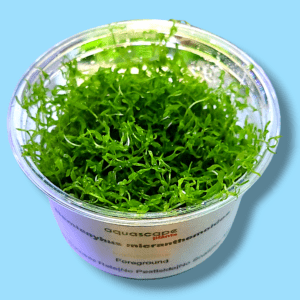 Hemianthus micranthemoides pearl weed
Hemianthus micranthemoides pearl weed  Creeping Jenny or Lysimachia nummularia
Creeping Jenny or Lysimachia nummularia 